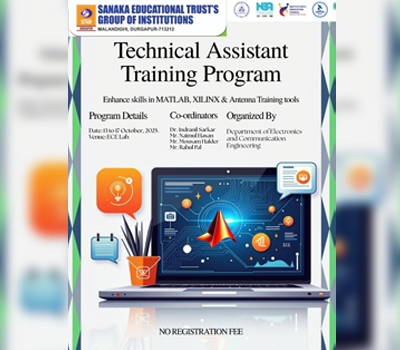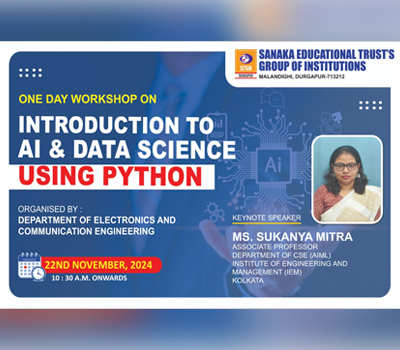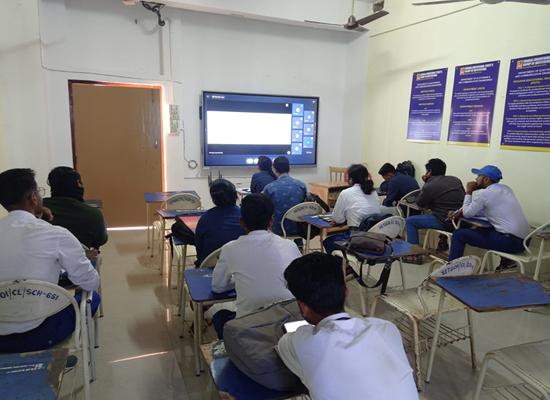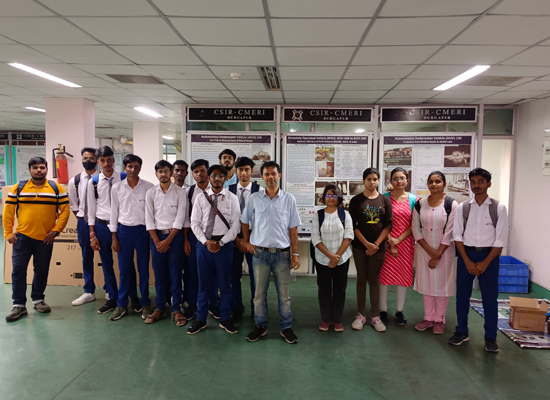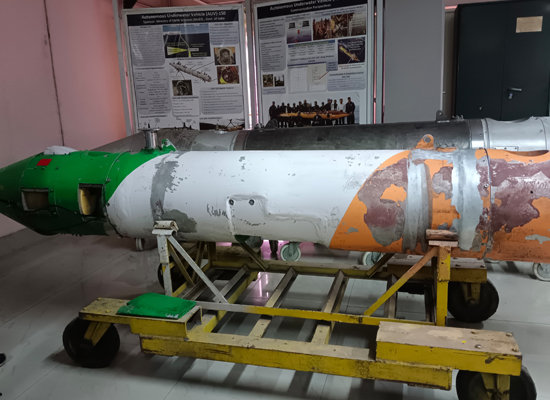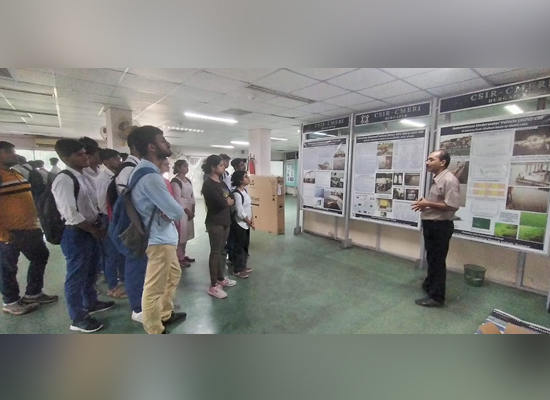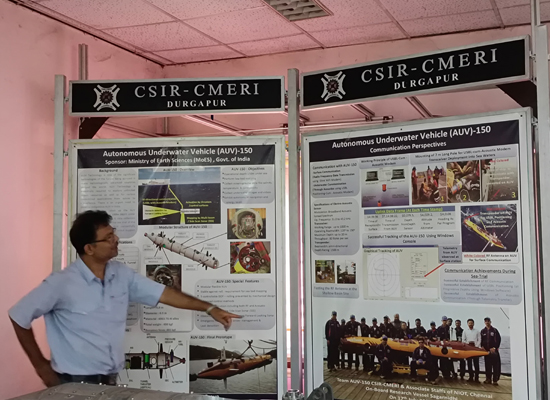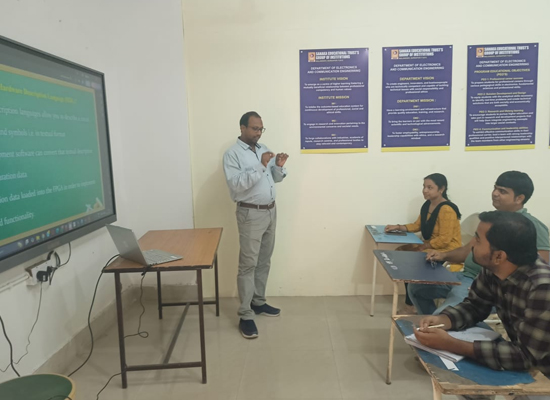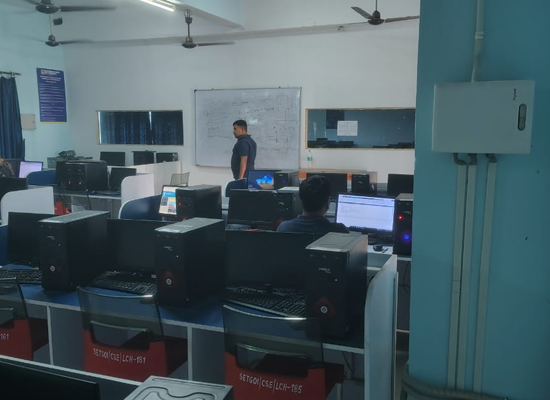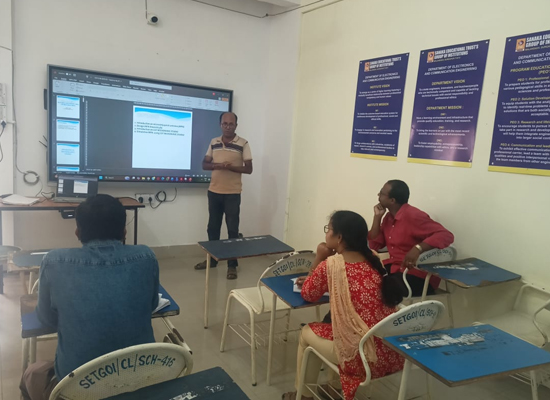Introduction to the Undergraduate Programme
The Department of Electronics and Communication Engineering at SETGOI is committed to generating globally competitive and employable engineers. The programme provides an appropriate and fulfilling atmosphere for students to explore ideas, foster a spirit of curiosity, and nurture a drive for excellence through seminars, live projects, and case studies. The ideal Industry-Academia environment provides students with practical hands-on sessions and a dynamic teaching training course, culminating in a vibrant and successful community of professionals capable of developing both concepts and skills required for the design, analysis, manufacturing, and maintenance of various types of electronics and communication systems. The program's dedicated faculty strives to impart to students the most recent breakthroughs in VLSI & Embedded Technology, Microwave and Digital Communication System Design, Automation & Robotics, Quantum InformationComputing, Artificial Intelligence, Signal Processing Techniques and its use in different sectors.
Who is the Programme for?
The programme is designed for those who are interested to make a career in-
| Major Career Opportunities | Higher Education Opportunities | Alternative Career Options |
|---|---|---|
|
|
|
Who will hire you?
- Electronic Giants: Intel, AMD, Sony, Honeywell, Texas Instruments, Motorola, Samsung, Cisco, Toshiba, MU Sigma, Philips, Ericsson Global
- Government PSUs: Bharat Electronics, BSNL, DRDO, Defence Services, CSIR, ISRO, BARC, HAL, Indian Air Lines, Air India, Airport Authority of India, Indian Railways, BSNL / MNTL
- Software companies: Oracle, Deloitte, Cybage, Saankhya Labs, Microsoft(SMSG), Unisys Global, TCS, Wipro, IBM, S&P Capital IQ, Samsung R&D, Freescale, Societe Generale, Samsung Software India, Sapient Nitro, L&T IES, Mahindra & Mahindra, ABB, Comviva Technologies Ltd, Nomura, Mphasis, Toshiba Embedded Software (I) Private Ltd, iGATE PATNI, TATA ELXSI and many more.
Curriculum Structure
| Sl No. | Category | Breakup of Credits | Credit Distribution % |
|---|---|---|---|
| 1. | Humanities & Social Sciences + Management Courses | 9 | 5.6 |
| 2. | Basic Science Courses | 28 | 17.3 |
| 3. | Engineering Science Courses | 23 | 14.2 |
| 4. | Professional Core Courses | 49.5 | 30.7 |
| 5. | Project / Internship | 16 | 9.9 |
| 6. | Professional Elective Courses | 24 | 14.9 |
| 7. | Open Elective Courses | 12 | 7.4 |
| 8. | Mandatory Courses | 0 | 0 |
| Total Credits | 161.5 | 100 | |
Curriculum Details
Laboratories

Electronic Devices Laboratory
Students get familiarized with the analysis and design of circuits by using semiconductor devices like diodes, transistors, FETs, SCRs, ....

Electronic Devices Laboratory
Students get familiarized with the analysis and design of circuits by using semiconductor devices like diodes, transistors, FETs, SCRs, and UJTs. This lab mainly focuses on semiconductor device physics. The facilities include Dual DC Regulated Power Supply, (0-30) MHz Cathode Ray Oscilloscope, (1-1)MHz Function Generator, Digital Voltmeter, Digital milli-Ammeters, Digital micro-ammeters, Digital Multimeters, Circuit components for implementing Diodes/Transistors/FET, SCR/UJT and SCR based circuits.
LIST OF SOFTWARE
- MultiSIM version 11
- MATLAB 9.7 2019b
- Xilinx ISE version 14.7

Analog Electronics Laboratory
This lab aims to teach students about Linear Integrated Circuit design using 555 Timer, phase-locked loop, and Schmitt Trigger Kits.....

Analog Electronics Laboratory
This lab aims to teach students about Linear Integrated Circuit design using 555 Timer, phase-locked loop, and Schmitt Trigger Kits. It provides all hardware and software required to measure the characteristics of various electronic components. Students are emphasized to design and analyze the electronic circuits as well as pulse digital circuits and are supposed to co-relate it theoretically. Components include diodes, BJT,FET, UJT, Resistors, Inductors, and Capacitors, IC Components Like IC 741,555,565,723,7912,7809,7805. Current Shunt and Voltage Series Feedback Amplifier Kits, Power Amplifier kits(Tuned Amplifier).
LIST OF SOFTWARE
- MultiSIM version 11
- MATLAB 9.7 2019b
- Xilinx ISE version 14.7

Digital System Design Lab
The Digital System Design Lab is one of the core laboratories of our Electronics & Communication Engineering Department. Digital System Design .....

Digital System Design Lab
The Digital System Design Lab is one of the core laboratories of our Electronics & Communication Engineering Department. Digital System Design Lab is equipped with Bread Board, ICs, and various Digital Electronic Kits. It helps to learn the basic nomenclature of ICs and their specifications by developing the logic circuits on breadboard. This lab provides the idea of Boolean functions, and Truth Tables of Logic Gates using TTL ICs. This electronic lab helps the students to get an overview of the design of different logic circuits of Combinational and Sequential Circuits.
LIST OF SOFTWARE
- MultiSIM version 11
- MATLAB 9.7 2019b
- Xilinx ISE version 14.7

Analog and Digital Communication Laboratory
This laboratory provides a platform for students to understand the basics of analog and digital communication systems, as well as modulation tech .....

Analog and Digital Communication Laboratory
This laboratory provides a platform for students to understand the basics of analog and digital communication systems, as well as modulation techniques, data transmission, and multiplexing. It also provides all hardware and software required to design and simulation of communications with the applications using MATLAB software. Facilities include: (0-500) MHz Spectrum Analyzer, (1-30)V DC Regulated Power Supply, Amplitude Modulation & Demodulation kits. Single Side Band & Suppressed Carrierkits, Pulse Code Modulation kits, Phase Shift Keying kits, frequency shift Keying Kits, D-Pulse Code Modulations kits, Delta Modulation Kits.
LIST OF SOFTWARE
- MultiSIM version 11
- MATLAB 9.7 2019b
- Xilinx ISE version 14.7
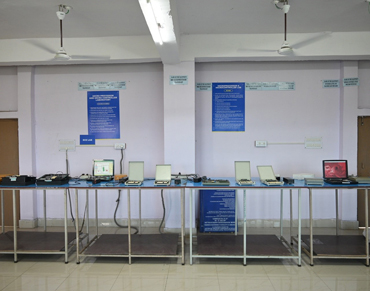
Microprocessors and Microcontrollers Laboratory
This laboratory provides all hardware and software required to learn the assembly language programming systematically for the different .....

Microprocessors and Microcontrollers Laboratory
This laboratory provides all hardware and software required to learn the assembly language programming systematically for the different applications of microprocessors and microcontrollers. Students can execute basic assembly language programs as well as interface ADC, DAC, and stepper motor through various interface cards. Facilities: Intel 8085-8086 Microprocessor kits with keyboards, Interfacing Modules for 8051 Microcontroller like Liquid Crystal Display, Timer/Counter, UART & Interrupt, and Matrix Keyboard.
LIST OF SOFTWARE
- MultiSIM version 11
- MATLAB 9.7 2019b
- Xilinx ISE version 14.7

Electromagnetic Field Theory & Transmission Line
This is a vital lab where students can understand the basics of Electromagnetic field theory and transmission line .....

Electromagnetic Field Theory & Transmission Line
This is a vital lab where students can understand the basics of Electromagnetic field theory and transmission line. There are different hardware and simulation experiment through which students experience the flavor of the Modern Transmission line, various antennas like a dipole, horn folder dipole, etc. Spectrum analyzer 1GHz. And Microwave Test bench(Gunn Power supply and Klystron Power supply).
LIST OF SOFTWARE
- MultiSIM version 11
- MATLAB 9.7 2019b
- Xilinx ISE version 14.7
Activity gallery
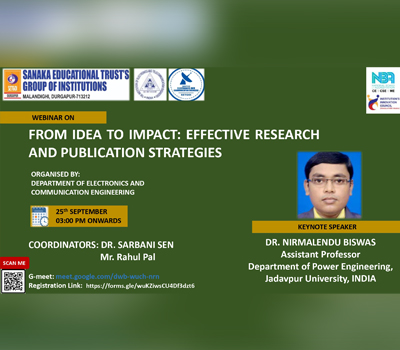


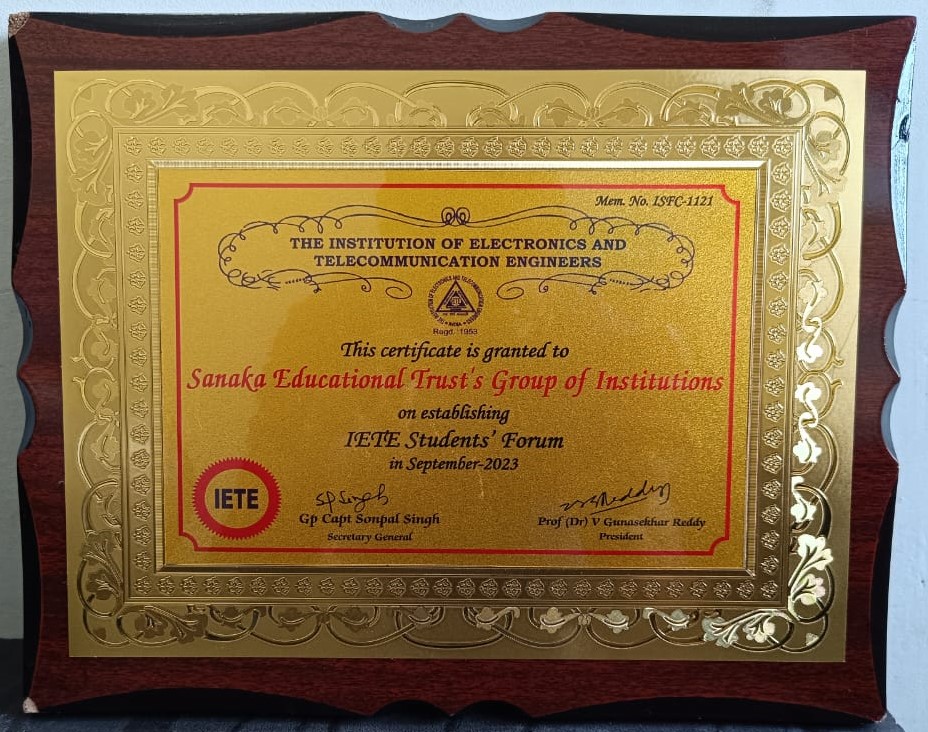

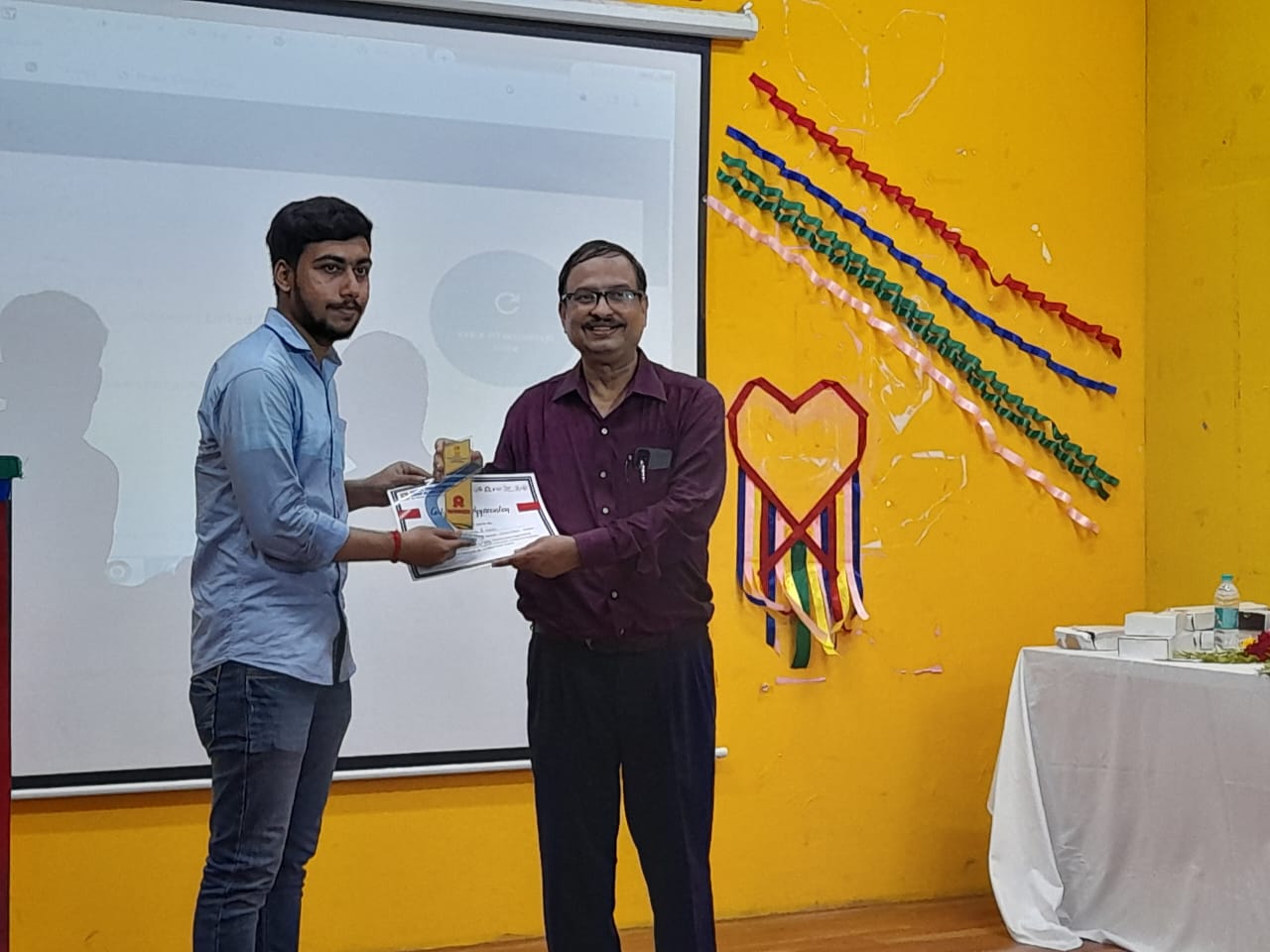

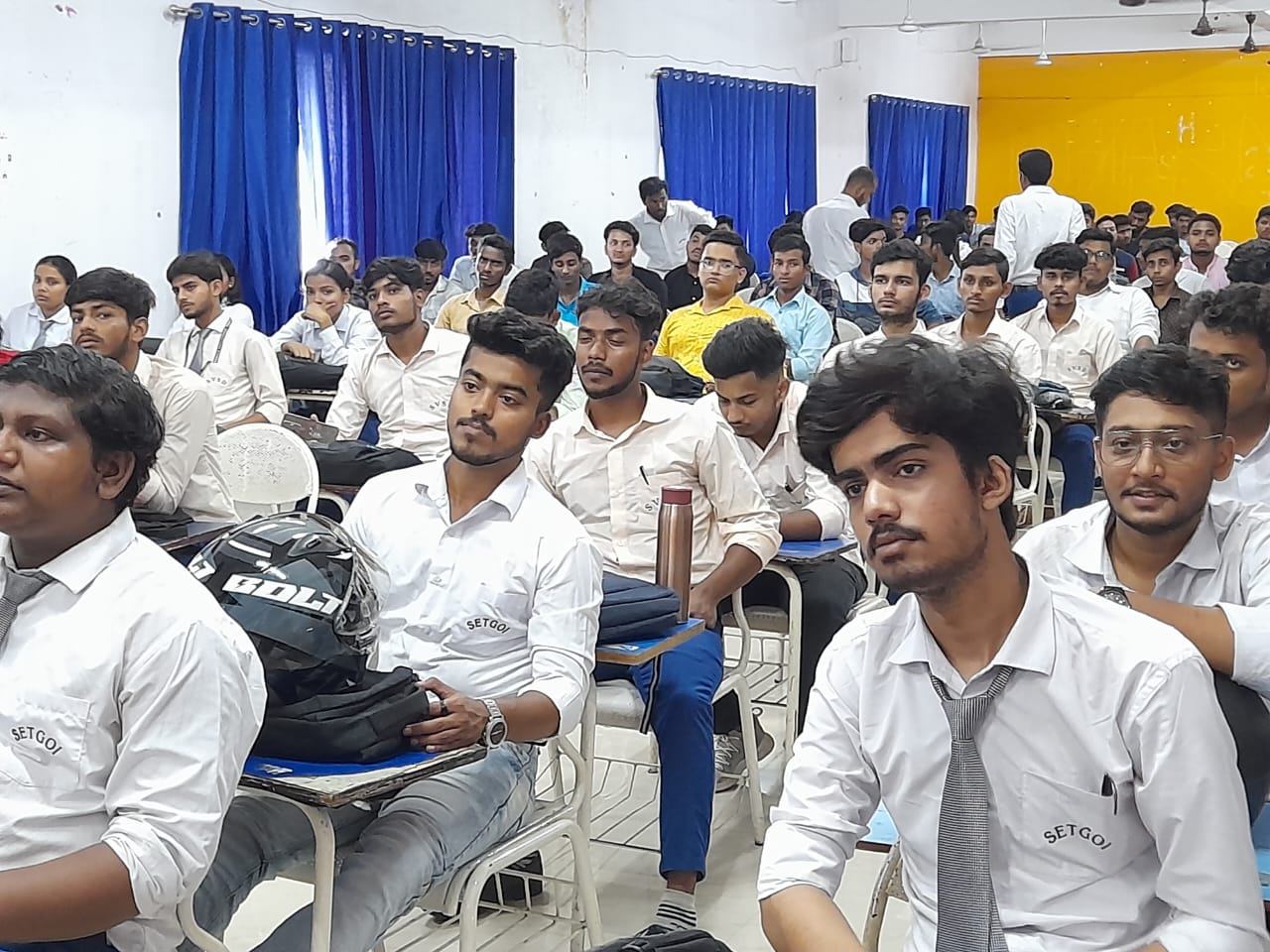

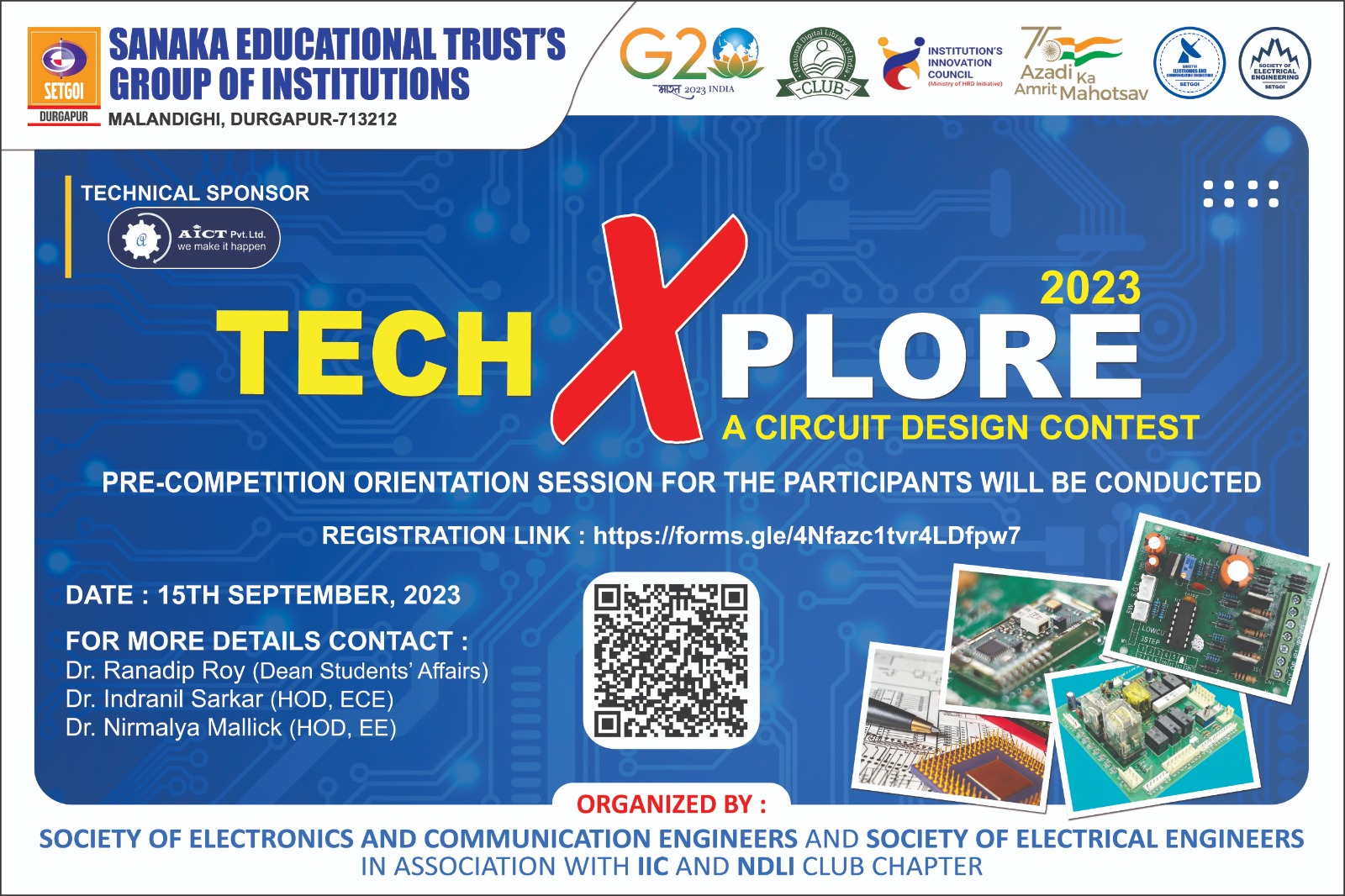
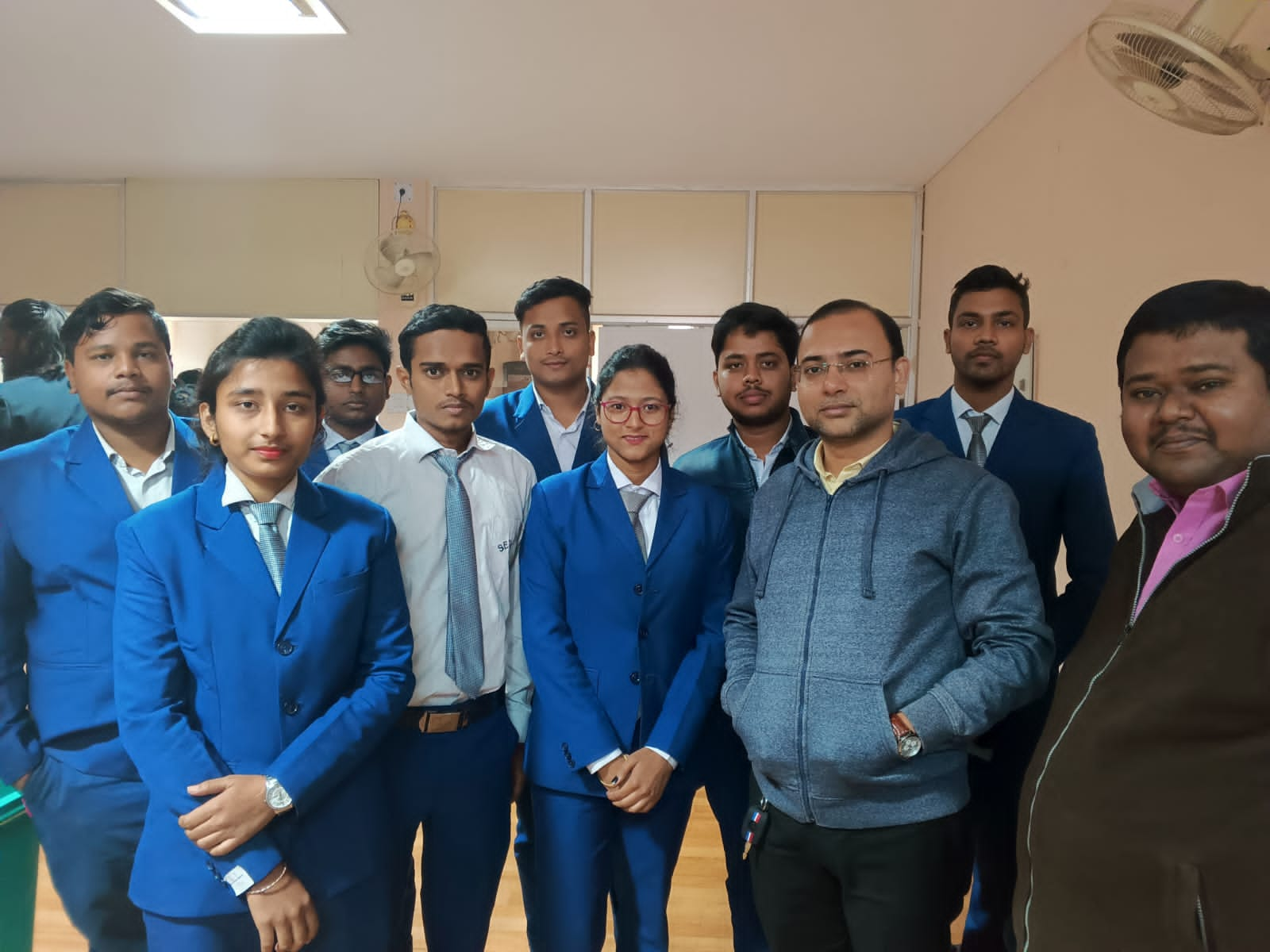
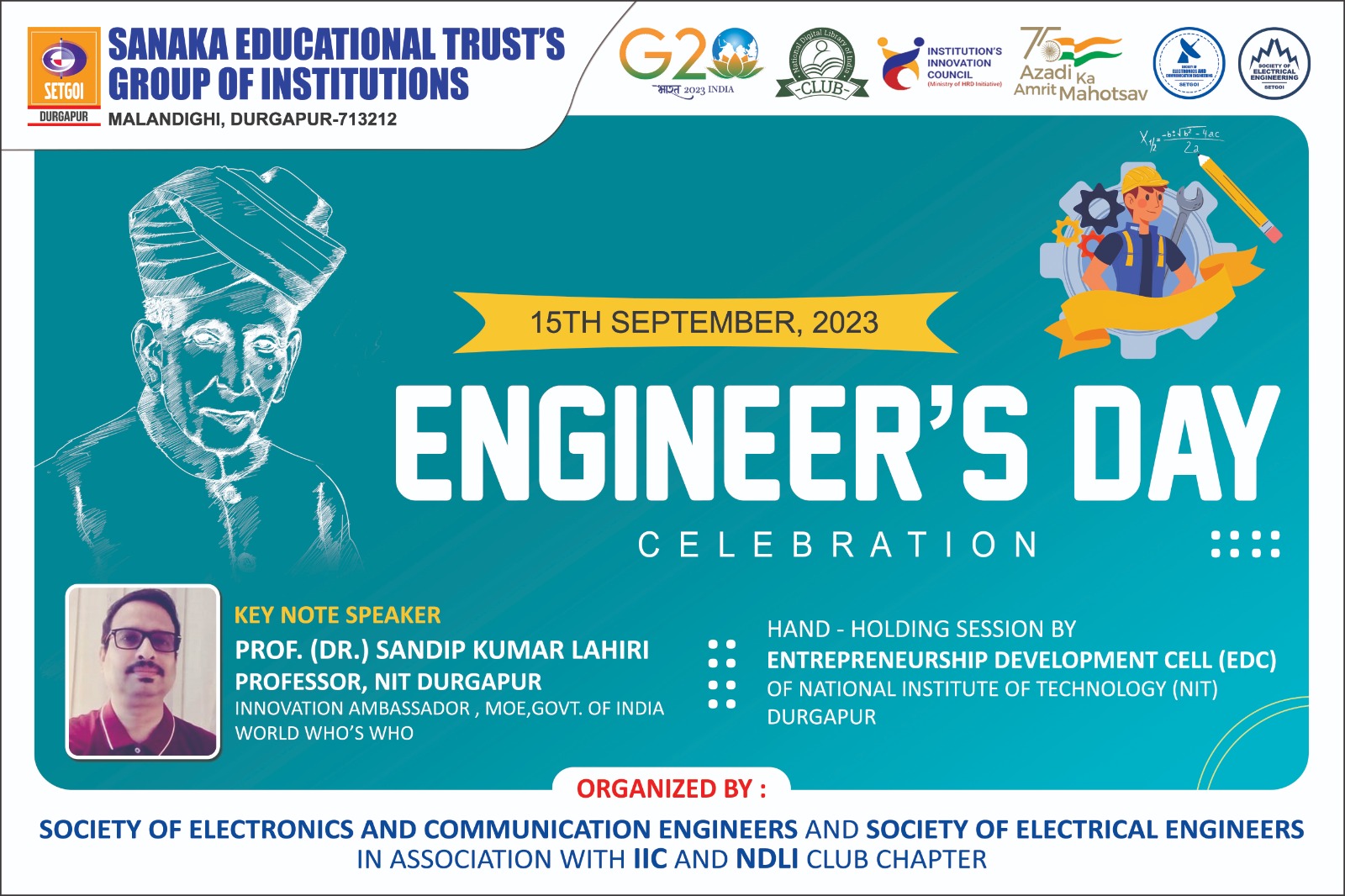
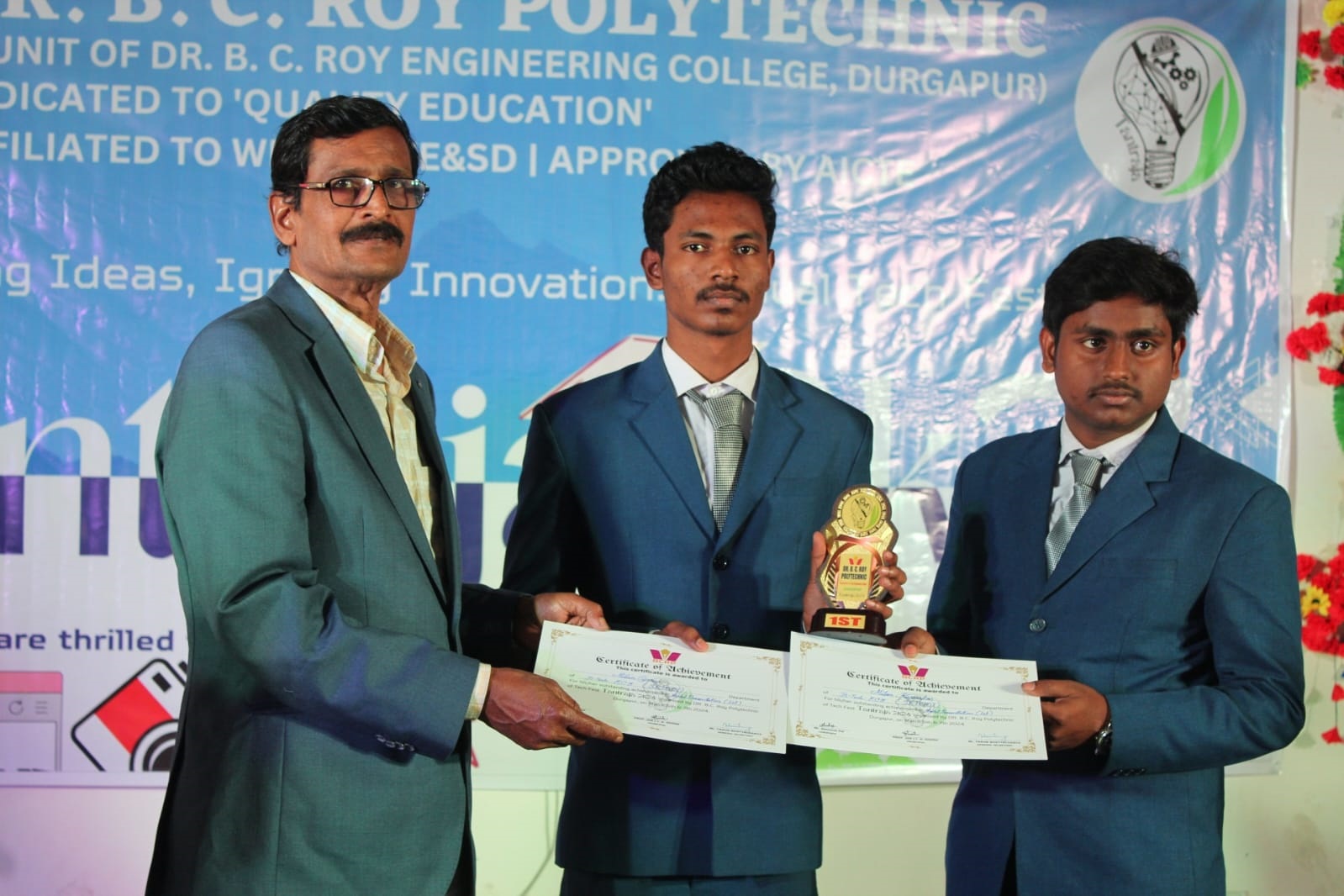



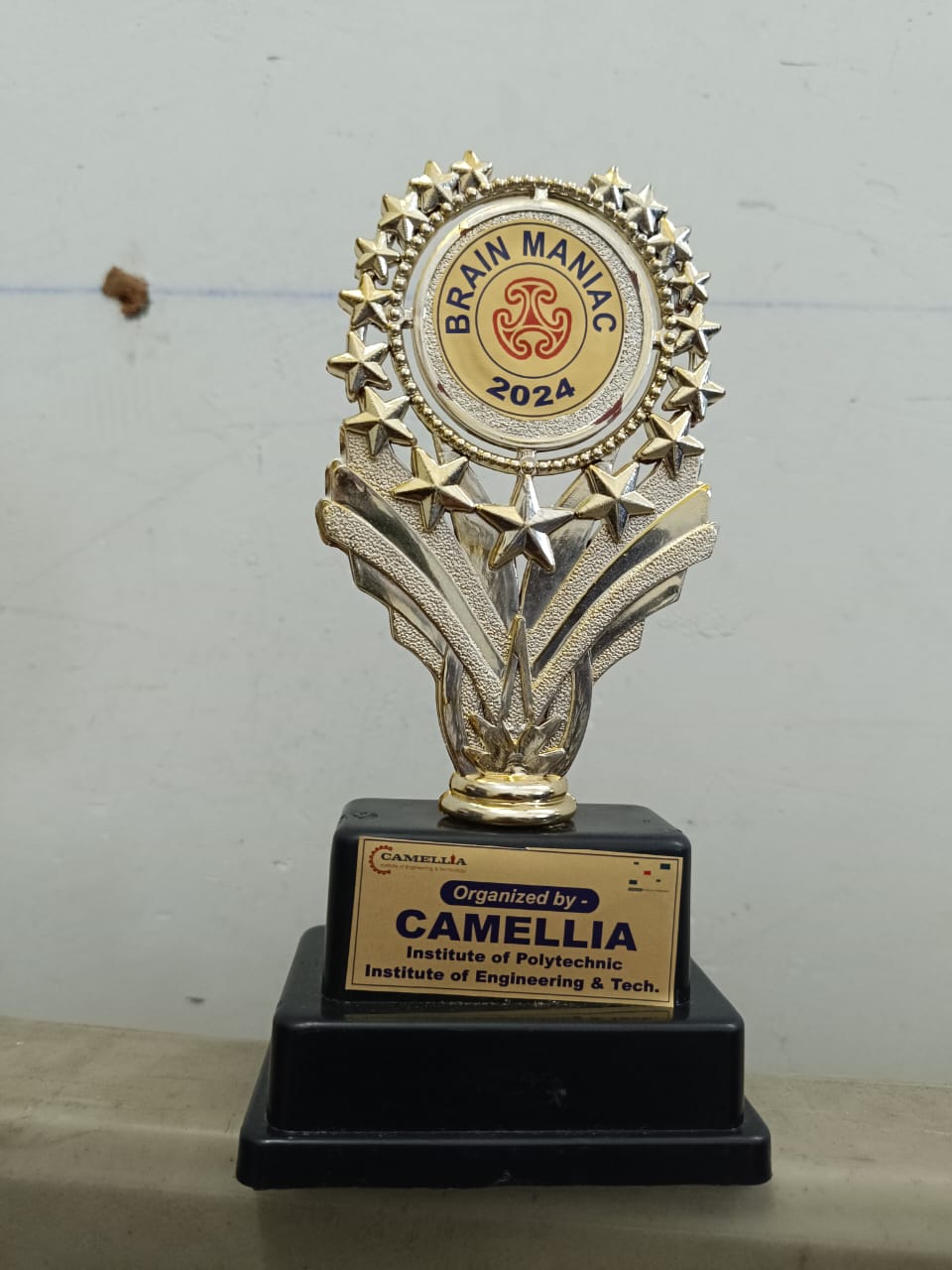
Career Guidance & Mentoring
- Faculty Mentor monitors the personal and professional development of individual student mentee.
- Guides curricular, co-curricular and extra-curricular activities.
- Mentor establishes a personal relationship and addresses the various issues of the student.
DEPARTMENT VISION:
To create engineers, innovators, and businesspeople who are technically competent and capable of tackling technical issues with social responsibility and professional ethics
DEPARTMENT MISSION:
- DM1: Have a learning environment and infrastructure that provide quality education, training, and research.
- DM2: To bring the learners on par with the most recent scientific and technological advancements.
- DM3: To foster employability, entrepreneurship, leadership capabilities with ethics, and a research mindset.
PROGRAM EDUCATIONAL OBJECTIVES (PEO):
- PEO 1: career success Have professional careers through various skills and knowledge in electronics, communication engineering, allied domains and fundamental sciences.
- PEO 2: Solution Development and Design Have analytical skills necessary to identify real-time problems and create technical solutions that are both socially and economically acceptable.
- PEO:3 Research and lifelong learningPursue higher education and take part in research and development projects that will help them integrate engineering concepts into larger social contexts.
- PEO:4 Communication and leadership abilitiesExhibit effective communication skills in their professional career; lead a team with strong leadership qualities and positive interpersonal relationships.
PROGRAM SPECIFIC OUTCOMES (PSO):
Students of Electronics and Communications Engineering will be able to
- PSO 1: Enable a platform for the development of digital circuits and embedded software for robotics, embedded systems, and signal processing applications.
- PSO 2: Employ High Frequency Structure Simulator (HFSS) to model and assess Patch and Smart Antennas for Wired and Wireless Communication Applications.
PROGRAM OUTCOMES (PO):
| PO1 | Engineering Knowledge: Apply the knowledge of mathematics, science, engineering fundamentals, and an engineering specialization to the solution of complex engineering problems. |
|---|---|
| PO2 | Problem Analysis: Identify, formulate, review research literature, and analyse complex engineering problems reaching substantiated conclusions using first principles of mathematics, natural sciences and engineering sciences. |
| PO3 | Design/Development of Solutions: Design solutions for complex engineering problems and design system components or processes that meet the specified needs with appropriate consideration for the public health and safety, and the cultural, societal, and environmental considerations. |
| PO4 | Conduct Investigations of Complex Problems: Use research-based knowledge and research methods including design of experiments, analysis and interpretation of data, and synthesis of the information to provide valid conclusions for complex problems |
| PO5 | Modern Tool Usage: Create, select, and apply appropriate techniques, resources, and modern engineering and IT tools including prediction and modelling to complex engineering activities with an understanding of the limitations. |
| PO6 | The Engineer and Society: Apply reasoning informed by the contextual knowledge to assess societal, health, safety, legal and cultural issues and the consequent responsibilities relevant to the professional engineering practice. |
| PO7 | Environment and Sustainability: Understand the impact of the professional engineering solutions in societal and environmental contexts, and demonstrate the knowledge of, and need for sustainable development. |
| PO8 | Ethics: Apply ethical principles and commit to professional ethics and responsibilities and norms of the engineering practice. |
| PO9 | Individual and Team Work: Function effectively as an individual, and as a member or leader in diverse teams, and in multidisciplinary settings. |
| PO10 | Communication: Communicate effectively on complex engineering activities with the engineering community and with society at large, such as, being able to comprehend and write effective reports and design documentation, make effective presentations, and give and receive clear instructions. |
| PO11 | Project Management and Finance: Demonstrate knowledge and understanding of the engineering and management principles and apply these to one’s own work, as a member and leader in a team, to manage projects and in multidisciplinary environments. |
| PO12 | Life-long Learning: Recognize the need for, and have the preparation and ability to engage in independent and lifelong learning in the broadest context of technological change. |



